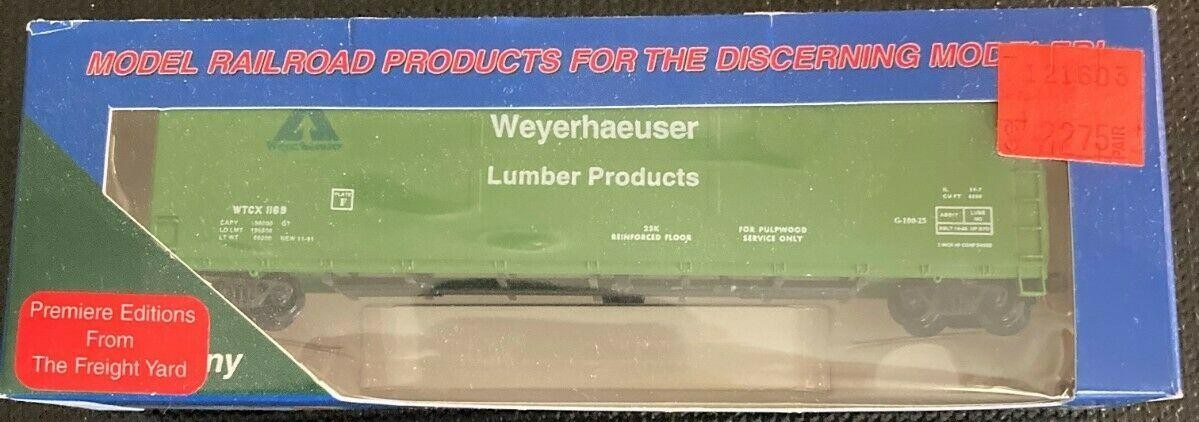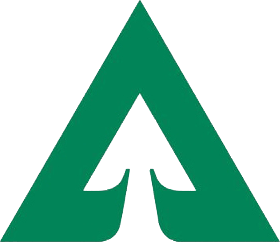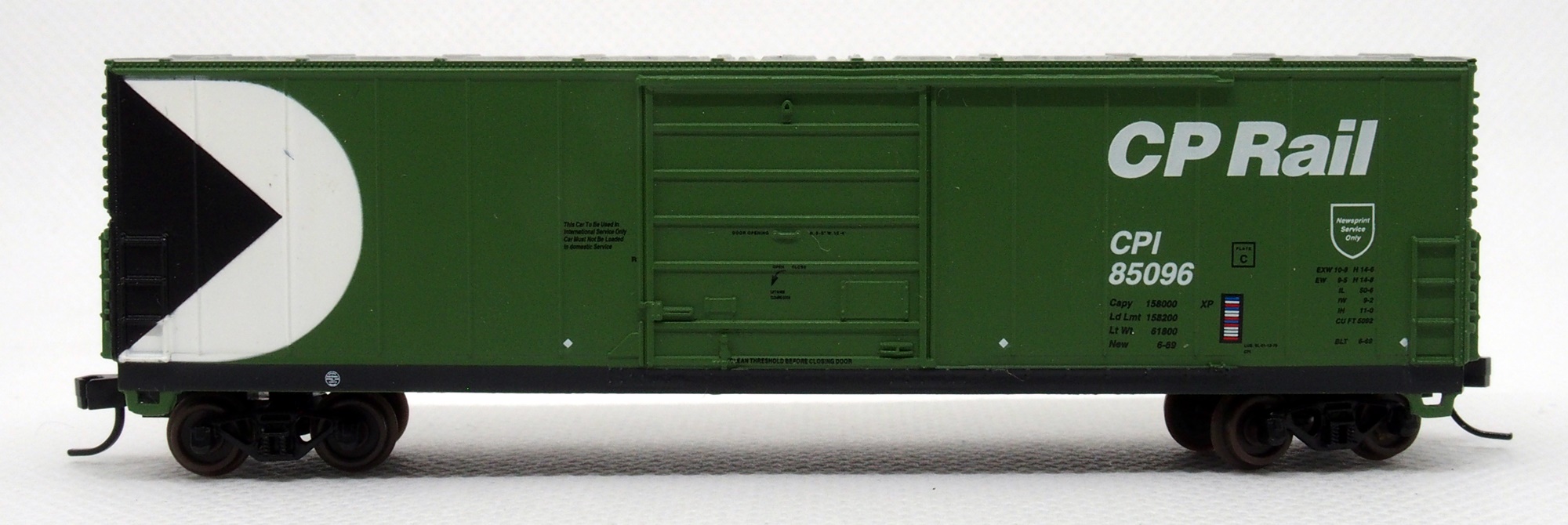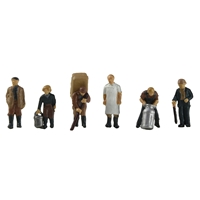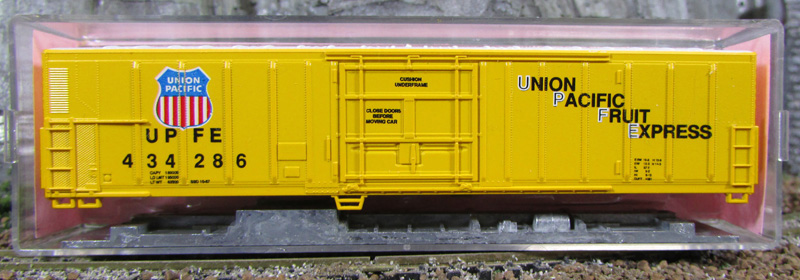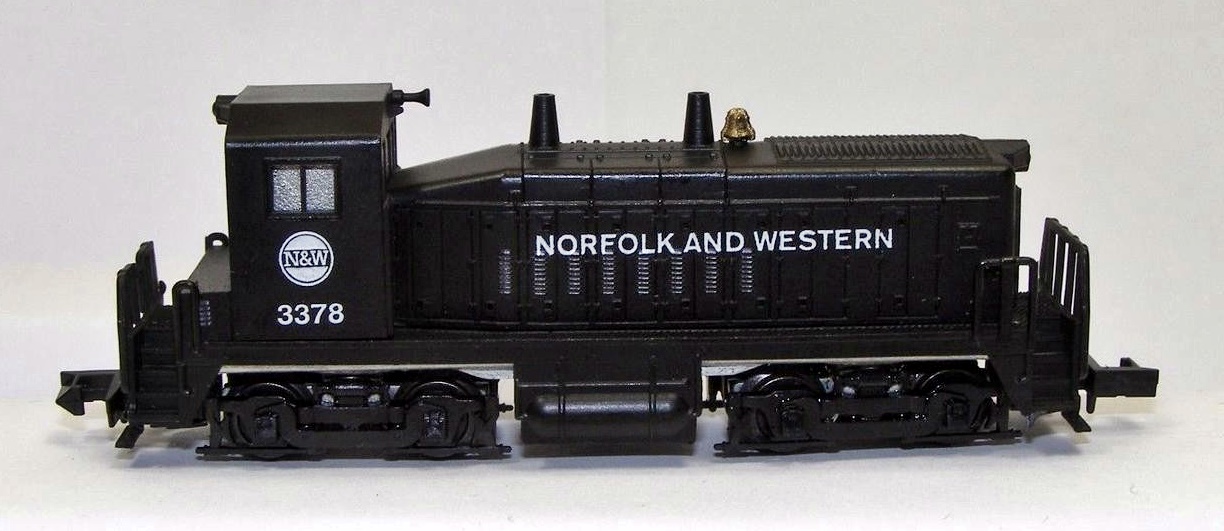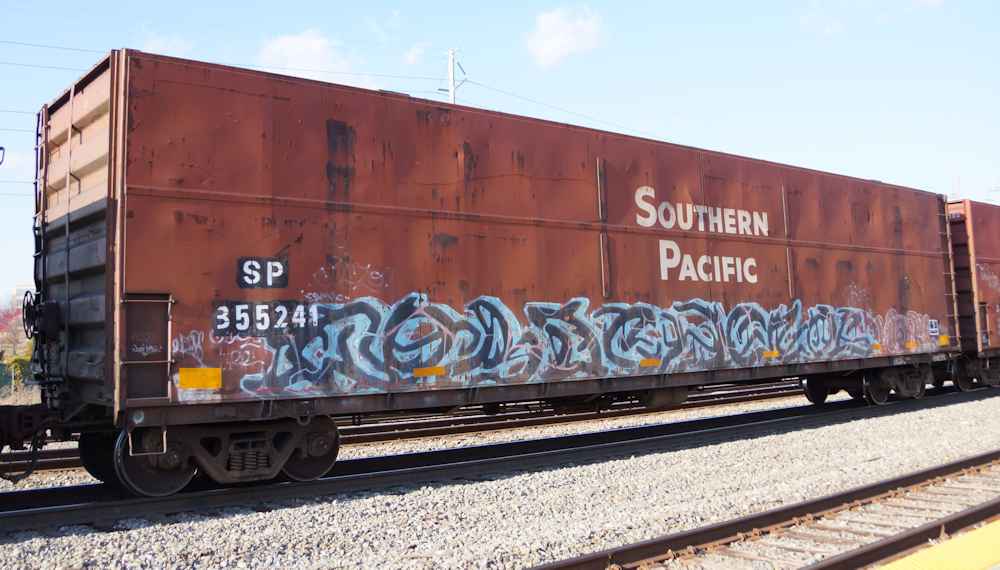Model Information: E&C shops originally designed this tooling in the late 1960's. It was later acquired by LBF and then by Hubert's and as of recently by InterMountain. Cars come factory equipped with Micro-Trains® trucks/couplers and come with a loads. Examples can be found with E&C, LBF and Hubert's branding. InterMountain (as of 2/2020) has not yet produced a release though announced under its 'Value Line by InterMountain' range.
Prototype History: Wood chips are used to make paper, and particle board and sometimes even burned as fuel. The early woodship cars were built by adding high sides to gondolas, or can-opener-ing boxcars (cutting the roofs off and welding up the doors).
While this worked for a while (some of them are still in service), the 1960's saw the introduction of specialized gondolas and hoppers designed specifically for wood chips.
Large 60- to 65- foot gondolas became the preferred style. Most are around 6,000 to 6,800 cf capacity. FMC, NCS and Pacific Car & Foundry built a specific type with smooth sides and interior braces.
While this worked for a while (some of them are still in service), the 1960's saw the introduction of specialized gondolas and hoppers designed specifically for wood chips.
Large 60- to 65- foot gondolas became the preferred style. Most are around 6,000 to 6,800 cf capacity. FMC, NCS and Pacific Car & Foundry built a specific type with smooth sides and interior braces.
Road Name History: Weyerhaeuser (pronounced "Warehouser") Company, is one of the world's largest private owners of timberlands, owning or controlling nearly 12.4 million acres of timberlands in the U.S. and managing additional 14.0 million acres timberlands under long-term licenses in Canada. The company also manufactures wood products. Weyerhaeuser is a real estate investment trust.
In 1904, after years of successful Mississippi River-based lumber and mill operations with Frederick Denkmann and others, Frederick Weyerhaeuser moved west to fresh timber areas and founded the Weyerhaeuser Timber Company. Fifteen partners and 900,000 acres (3,600 km²) of Washington timberland were involved in the founding, and the land was purchased from James J. Hill of the Great Northern Railway. In 1929, the company built what was then the world's largest sawmill in Longview, Washington. Weyerhaeuser's pulp mill in Longview, which began production in 1931, sustained the company financially during the Great Depression. In 1959, the company eliminated the word "Timber" from its name to better reflect its operations. In 1965, Weyerhaeuser built its first bleached kraft pulp mill in Canada. Weyerhaeuser implemented its High Yield Forestry Plan in 1967 which drew upon 30 years of forestry research and field experience. It called for the planting of seedlings within one year of a harvest, soil fertilization, thinning, rehabilitation of brushlands, and, eventually, genetic improvement of trees.
In 1904, after years of successful Mississippi River-based lumber and mill operations with Frederick Denkmann and others, Frederick Weyerhaeuser moved west to fresh timber areas and founded the Weyerhaeuser Timber Company. Fifteen partners and 900,000 acres (3,600 km²) of Washington timberland were involved in the founding, and the land was purchased from James J. Hill of the Great Northern Railway. In 1929, the company built what was then the world's largest sawmill in Longview, Washington. Weyerhaeuser's pulp mill in Longview, which began production in 1931, sustained the company financially during the Great Depression. In 1959, the company eliminated the word "Timber" from its name to better reflect its operations. In 1965, Weyerhaeuser built its first bleached kraft pulp mill in Canada. Weyerhaeuser implemented its High Yield Forestry Plan in 1967 which drew upon 30 years of forestry research and field experience. It called for the planting of seedlings within one year of a harvest, soil fertilization, thinning, rehabilitation of brushlands, and, eventually, genetic improvement of trees.
Brand/Importer Information: The Freight Yard was a hobby shop that did custom decoration and special runs of other manufacturers' N Scale products. It sold its custom products under several brands or collections: Premiere Editions, by The Freight Yard and Dreams Design.
It was located in Anaheim, California and then moved to 2006 in Phoenix, Arizona.
Established in the late 1980s, it stopped business under this name by the end of the 2000s.
The Freight Yard was owned and operated by Darren J. Cohen. Darren is now operating North Valley Trains.
The Freight Yard / Premiere Editions runs are usually available in series of two to twelve different numbers (suffixed A to M, with I not used).
The first two digits of the stock number correspond to the release year (9x being 199x, and 2x being 200x).
It was located in Anaheim, California and then moved to 2006 in Phoenix, Arizona.
Established in the late 1980s, it stopped business under this name by the end of the 2000s.
The Freight Yard was owned and operated by Darren J. Cohen. Darren is now operating North Valley Trains.
The Freight Yard / Premiere Editions runs are usually available in series of two to twelve different numbers (suffixed A to M, with I not used).
The first two digits of the stock number correspond to the release year (9x being 199x, and 2x being 200x).
Item created by: Alain LM on 2022-11-23 00:51:35
If you see errors or missing data in this entry, please feel free to log in and edit it. Anyone with a Gmail account can log in instantly.
If you see errors or missing data in this entry, please feel free to log in and edit it. Anyone with a Gmail account can log in instantly.


